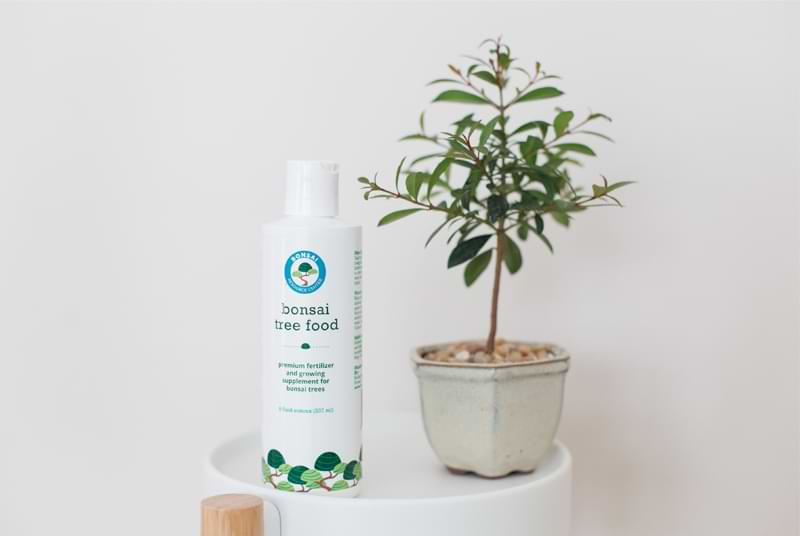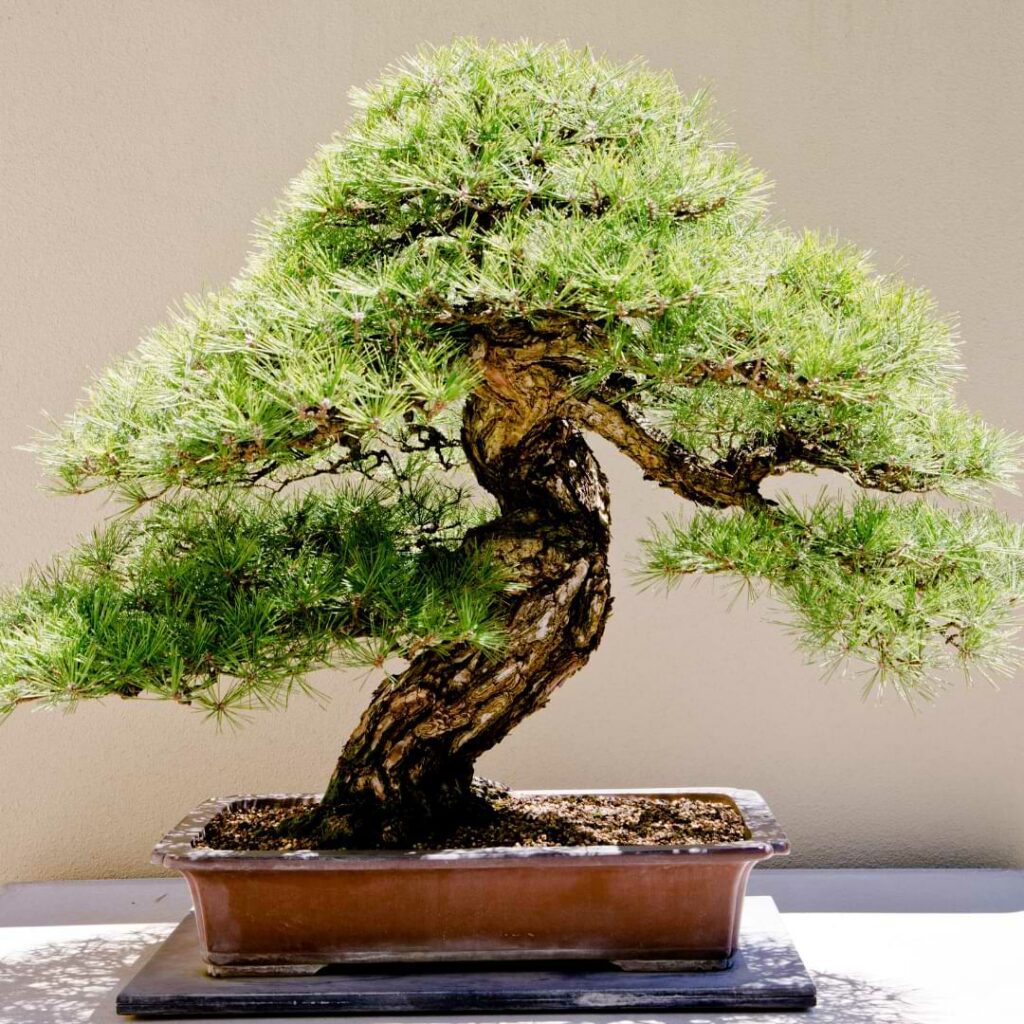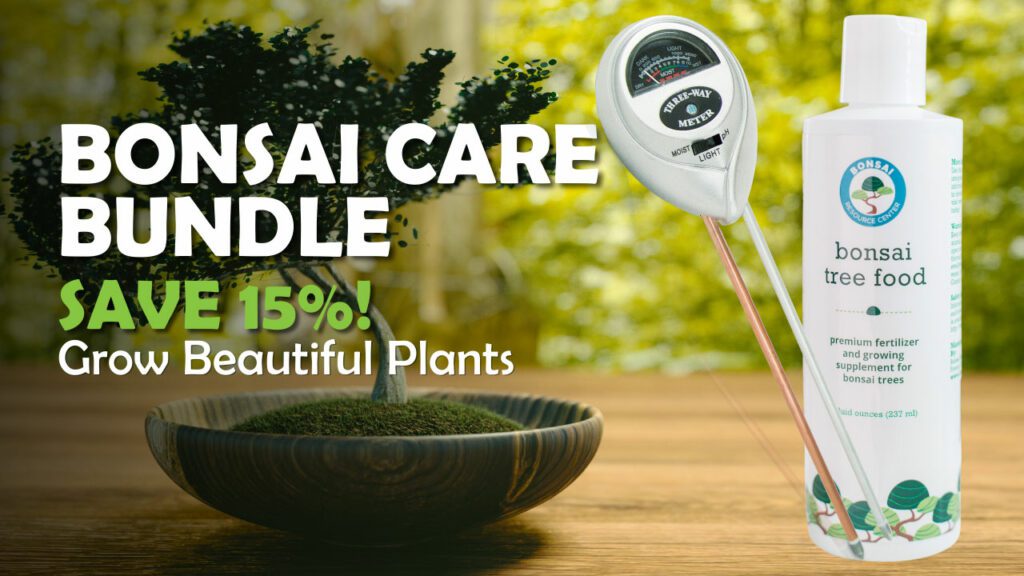If you’re looking to get into the fascinating world of bonsai, then a Dwarf Mugo Pine (Pinus Mugus ‘Mops’) is an excellent choice for your first bonsai tree. This cultivar is a slow-growing evergreen that can withstand any climate, making it perfect for beginners and those with limited outdoor space.
What Makes Dwarf Mugo Pine a Good Bonsai
Dwarf Mugo Pine bonsais are beautiful, hardy, and relatively easy to care for. There are many reasons this variety of bonsai is an excellent choice for any house plant enthusiast, including their beauty, resilience, and their growth rate.
Additionally, they have dense foliage that can be styled in a number of ways, and their small size makes them perfect to grow inside without worrying about them outgrowing their container too quickly.
They are also fairly tough plants that can withstand harsh conditions, making them ideal for beginner bonsai enthusiasts. They won’t live through complete neglect, but they certainly don’t require daily care like some other bonsai trees and houseplants.
Growth Rate
The average growth rate for the dwarf mugo pine is around 2 to 3 inches per year. However, this can vary depending on the specific plant and growing conditions. For example, if the plant is young or in a particularly sunny spot, it may grow a bit faster. If you’re looking to encourage faster growth in your plant, make sure it has plenty of sunlight and water.
Mugo Pine Bonsai Pruning And Styling
Pruning and styling a mugo pine bonsai is not difficult, but it does require some patience and attention to detail.
When pruning a mugo pine bonsai, the first step is to remove any dead or dying branches. Next, cut back any long or straggly branches to promote new growth. Finally, thin out the foliage to allow more light and air to reach the inner branches.
When styling a mugo pine bonsai, the main goal is to create a balanced and pleasing shape. Start by selecting the front and back of the tree, then choose two side views. From there, begin pruning and shaping the branches to create the desired silhouette. Remember to leave enough foliage on each branch so that the tree can continue to grow and thrive.
Training Mugo Pine
Training your bonsai tree is one of the most rewarding parts of the whole process. Shaping and training your tree is a rewarding way to express your creativity and create a piece of living art that will look amazing in your home. To train your tree, you will need either plant ties or bonsai training wire. Training wire is highly recommended, because it is designed to be safe for your bonsai tree as long as you’re not wrapping it too tightly.
The first step to training your bonsai tree with training wire is to wrap the wire around the base of the tree, going all the way up the tree and around each branch individually. Make sure not to wrap your wire too tightly, and be gentle with delicate new growth. Too much stress from wrapping wire can hurt your tree.
Once the tree is wrapped with wire, you can gently bend the tree to your desired shape. Just make sure to keep the tree relatively balanced. If a branch is not wanting to bend too easily, do slight adjustments every two to three days until the branch is where you want it to be. Do not force your bonsai tree to bend, you are simply guiding the tree to grow a certain way. If you force the tree too much, you may end up damaging the tree.
When To Prune Mugo Pine Bonsai
Mugo pines are vigorous growers and can quickly outgrow their intended space if not properly pruned. As a result, pruning is a necessary part of mugo pine bonsai care. The best time to prune your mugo pine bonsai is in late spring or early summer, after the new growth has had a chance to harden off.
Avoid pruning in late summer or fall, as this can encourage new growth that will not have enough time to harden off before winter. If your bonsai tree is kept inside, then you should be able to prune any time. Just be cautious not to over-prune your tree when the growing season is fading.
How To Bonsai A Mungo Pine
If you want to grow your tree from seed, you’ll first need to soak the seed in water for 24 hours, and then plant in a well-draining seed starting mix. This will ensure that as your seedling emerges from the shell of the seed that it gets all the nutrients it needs in those first few crucial weeks.
If you are starting with an already established seed, all you need to do to bonsai the tree is properly prune it and give it the right pot to live in. You don’t want a pot that is too deep. Typically houseplants will need a deeper pot, but bonsai trees prefer to have a shallow and wide pot. This will allow the tree’s roots to grow out and provide plenty of stability for the tree.
Now it’s time to start shaping your mugo pine bonsai. To do this, remove any dead or dying branches and use pruning shears to trim back the remaining foliage so that it is about one-third its original size. You can also pinch back new growth to encourage a more compact form. When styling your mugo pine bonsai, create a pleasing asymmetrical shape with gentle curves rather than sharp angles.
Once you’re happy with the shape of your plant, it’s time to move on to the general care and upkeep of your bonsai tree.
Mugo Pine Bonsai Tree Care
Caring for your Mugo Pine bonsai tree is fairly simple, and generally follows the same care requirements of other bonsai trees. Ensuring they have the proper soil, are placed somewhere they can thrive either inside or outside, and that they get enough water and nutrients will help your bonsai tree stay healthy and thrive for many years.
Soil
The soil you use for your bonsai tree will ultimately determine your bonsai tree’s overall health. While there are many factors that go into a plant’s health, the soil is where it starts. It can begin effortlessly and excellently when you use the right soil for your tree. Using a potting mix specifically formulated for bonsai trees will ensure you’re giving your plant the right amount of drainage and nutrients it needs to thrive.
Position & Temperature
The Dwarf Mugo Pine is an evergreen conifer that originates from the mountainous regions of central and southern Europe, so it prefers full sun and a spot in your home that has a moderate temperature range. It is tolerant of partial shade, but will not do well in full shade. The optimum temperature range for the Dwarf Mugo Pine is between 45 and 75 degrees Fahrenheit.
Water
Watering your bonsai tree correctly is essential to its health and beauty. The frequency of watering will depend on the season and the climate in which you live. In general, you should water your bonsai every few days to keep the soil moist but not soggy.
During the growing season, from spring through summer, you may need to water your bonsai daily. If the weather is hot and dry, you may even need to water twice a day. In cooler weather or if your bonsai is in a shady spot, you can water every other day or every three days.
To check if your bonsai needs watering, stick your finger into the soil up to the first knuckle. If the soil is dry, it’s time to water. If the soil is still damp or cool to the touch, wait another day or two before watering again. You can also use a moisture meter to determine if your tree needs watering.
Over-watering is just as harmful as under-watering, so be sure not to give your bonsai too much H2O. When in doubt, it’s better to err on the side of too little rather than too much water.

Fertilizing
As with most bonsai, they will benefit from being fertilized on a regular basis. A good general-purpose fertilizer can be used, applied according to the manufacturer’s directions. However, it is best to err on the side of using less rather than more fertilizer. Over-fertilizing can result in growth that is too soft and weak.
To prevent any possibility of over-fertilizing, opt to use an bonsai plant food that is specially formulated for bonsai trees. This gives your plant all the nutrients it needs in smaller, more frequent quantities, making it easier for your tree to absorb and use the nutrients you are giving it.
Re Potting
Mugo pines are vigorous growers and can quickly outgrow their containers. If your mugo pine bonsai is growing too large for its pot or if you simply want to refresh the soil, it’s time to repot. Repotting should be done every two to three years for young mugo pines and every three to five years for mature trees.
The best time to repot your tree is late winter or early spring before new growth begins. This will give your tree a chance to adjust to its new home and recover from the stress of being moved.
Choose a pot that is only slightly larger than the one your mugo pine is currently in. A pot that is too large will make it difficult for the roots to establish themselves and could lead to problems with over watering.
- Fill the bottom of the pot with a layer of drainage material such as gravel or akadama. This step is not necessary if your pot already has plenty of drainage.
- Add a layer of bonsai soil mix in your pot.
- Gently remove your tree from its current pot, loosen any compacted roots and trim away any roots that are damaged or brown and mushy.
- Position your tree in the new pot and add more soil mix around it, tapping it down gently as you go.
- Water well and place in a shady spot with only filtered sunlight until new growth appears.
- After a week or two, your tree is ready to go back to its original home to enjoy its new pot.
Side Note: Do not fertilize your tree for at least 1 week after repotting. If your tree does go into shock from being repotted, it will not be able to use the nutrients from a fertilizer, and that can ultimately cause fertilizer burn, causing more stress and damage to your plant than necessary. If you do use an everyday plant food, dilute it to one-quarter to one-half of what you normally use.
Miniature Mugo Pine FAQ
Why do Mugo pines turn brown?
One of the most common reasons for browning needles on Mugo pines is drought stress. If the tree doesn’t have enough water, the needles will begin to turn brown and eventually drop off. This is a self-defense mechanism that the tree uses to conserve water. Make sure you’re watering your Mugo pine regularly, especially during periods of hot, dry weather.
Another reason for browning needles is nutrient deficiency. If the soil isn’t providing enough nutrients, the needles will turn yellow or brown. This is usually due to a lack of nitrogen in the soil. You can correct this by fertilizing your Mugo pine with a nitrogen-rich fertilizer.
Finally, mugo pines can also be affected by pests or diseases. If you see signs of pests or disease, such as discolored needles or sticky sap, contact a professional for treatment options.
By understanding the reasons why Mugo pines turn brown, you can take steps to prevent it from happening to your tree. Water regularly and fertilize with a nitrogen-rich fertilizer to keep your Mugo pine healthy and green all year long
Final Thoughts: Mugo Pine Bonsai Tree Care
Mugo pine bonsai trees are wonderful dwarf evergreens that make for beautiful and unique bonsai specimens. They are relatively easy to care for, and by giving your tree everything it needs, it will easily thrive for many years and give you plenty of beauty to enjoy in your home.
Join The Bonsai World
At The Bonsai Resource Center, our goal is to equip you with everything you need to grow and maintain a truly beautiful bonsai tree. This is our passion, and we want it to be yours as well! Whether you are a bonsai beginner or are looking to hone your skills, check out our other articles and visit our shop for all your bonsai needs!



